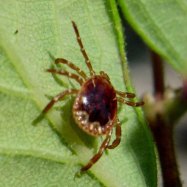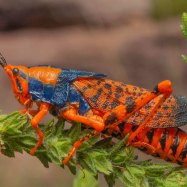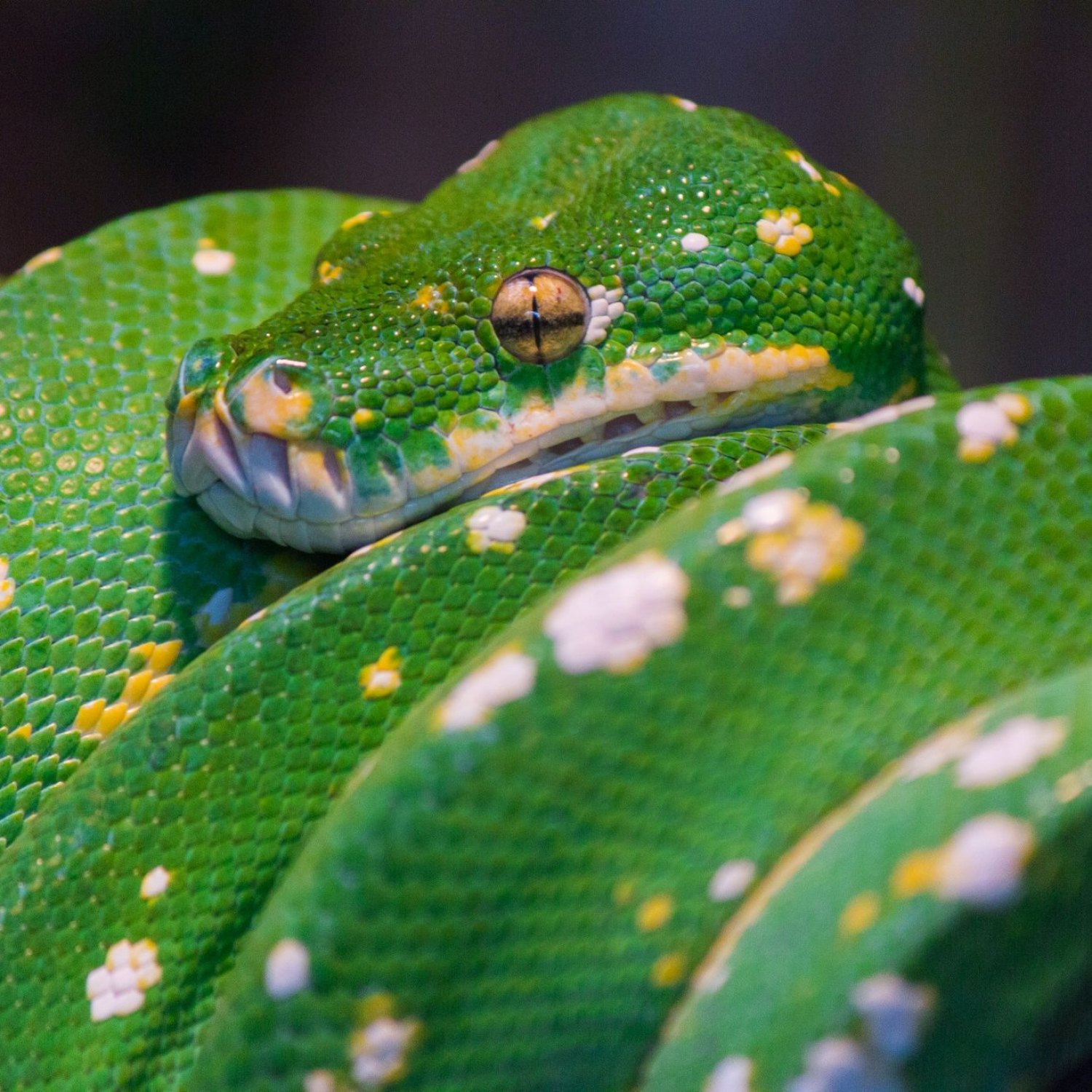
Green Tree Python
4-6 feet (1.2-1.8 meters)
The Green Tree Python, a member of the Pythonidae family, is a slender and arboreal snake found in trees. With a length of 4-6 feet (1.2-1.8 meters), they are famous for their bright green color and are commonly found in the trees of tropical rainforests. They are not venomous and primarily feed on small mammals and birds. Keep an eye out for these beautiful snakes on your next rainforest adventure! 🐍🌴 #GreenTreePython #RainforestAdventure #SlenderandArboreal #NatureLovers
Animal Details Summary:
Common Name: Green Tree Python
Kingdom: Animalia
Habitat: Rainforests
Incredible Green Tree Python: The Mystical Creature of the Rainforests
Nestled in the lush rainforests of New Guinea and surrounding islands lives a mesmerizing creature that holds a special place in the hearts of reptile enthusiasts around the world – the Green Tree Python. With its vibrant green color and striking markings, this snake is without a doubt one of the most enchanting reptiles on the planet. But there's more to this python than just its stunning appearance. Let's dive deeper and discover what makes the Green Tree Python so unique and fascinating Green Tree Python.The Scientific Name and Classification
The scientific name of the Green Tree Python is Morelia viridis. Its common name, Green Tree Python, is derived from its characteristic green color and its affinity for living in trees. This python belongs to the Animalia kingdom and the Chordata phylum, which includes all vertebrate animals. It is classified under the Reptilia class and the Squamata order, which includes all lizards, snakes, and amphisbaenians. The Green Tree Python is also a member of the Pythonidae family, which includes other well-known python species such as the Burmese python and the reticulated python.Habitat and Geographical Distribution
As its common name suggests, the Green Tree Python is primarily found in the rainforests of New Guinea and surrounding islands. These forests provide the perfect environment for this snake to thrive in. With their dense vegetation and high humidity, they offer ample opportunities for the python to hide and hunt its prey. These snakes are also known to inhabit lowland and mountainous forests, as well as eucalyptus woodlands in Australia Goberian.Feeding and Hunting Behavior
The Green Tree Python is a carnivorous reptile, meaning that it feeds exclusively on other animals. Their diet consists mainly of birds, but they also feed on small mammals and reptiles such as rodents and lizards. These pythons are skilled hunters and use their sharp teeth and powerful muscle contractions to capture and subdue their prey. They are also known for their unique hunting technique, where they hang from branches and ambush their unsuspecting prey as it passes by. This behavior makes them well-suited for their tree-dwelling lifestyle.The Arboreal Lifestyle and Body Morphology
As mentioned earlier, the Green Tree Python spends most of its life living in trees. This arboreal lifestyle has influenced its body morphology and behavior. Unlike other snake species, the Green Tree Python has a slender and elongated body with a prehensile tail, which allows it to grip onto branches and move effortlessly in the trees. This body shape also enables the python to be an efficient hunter, as it can easily maneuver through the dense foliage of the rainforest. Additionally, their smooth and glossy scales provide them with camouflage, making it easier for them to blend in with their surroundings.The Green Coloration and Other Distinctive Features
Without a doubt, the most mesmerizing feature of the Green Tree Python is its striking green color. This coloration is the result of pigments in their skin cells called iridophores. These iridophores reflect light in a way that makes the python appear green to the human eye. Interestingly, the intensity of their green color can change depending on their mood and surroundings. When stressed or frightened, their color becomes much darker, while basking in the sunlight makes their color appear brighter.Aside from their green color, Green Tree Pythons also have distinctive markings on their bodies, which vary from individual to individual. These markings can be white or yellow and are arranged in a zigzag pattern along the python's spine. These patterns act as a form of camouflage, helping them blend in with the tree branches and leaves. Their eyes are also unique, with a large, vertical pupil that gives them excellent vision for hunting and navigating through the trees.
The Size and Lifespan of Green Tree Pythons
On average, Green Tree Pythons can grow between 4-6 feet (1.2-1.8 meters) in length, with females typically being larger than males. This size may seem intimidating, but these snakes are generally docile and make excellent pets when properly cared for. In captivity, they can live up to 20 years or more, while their lifespan in the wild is unknown.Conservation and Cultural Significance
Green Tree Pythons are not listed as endangered, but their population is decreasing due to habitat loss and poaching for the pet trade. In some indigenous cultures, this python is revered, and they are often featured in traditional art and ceremonies. Unfortunately, this has also led to over-harvesting, threatening the survival of the species.The Green Tree Python as Pets
Due to their striking appearance and docile nature, Green Tree Pythons have become popular pets among reptile enthusiasts. However, they require specific care and an experienced owner. They need a large enclosure with plenty of branches for climbing, as well as a heat source and humidity control. Green Tree Pythons are not recommended for beginner snake owners, as their care can be complex and challenging.Conclusion
In conclusion, the Green Tree Python is a fascinating and unique creature that has captured the hearts of many reptile lovers. Its vibrant green color, arboreal lifestyle, and distinctive features make this snake a true marvel of nature. However, it is important to remember that these pythons are wild animals and should be appreciated and respected in their natural habitat. With proper conservation efforts and responsible pet ownership, we can ensure the survival of this mystical creature for generations to come.

Green Tree Python
Animal Details Green Tree Python - Scientific Name: Morelia viridis
- Category: Animals G
- Scientific Name: Morelia viridis
- Common Name: Green Tree Python
- Kingdom: Animalia
- Phylum: Chordata
- Class: Reptilia
- Order: Squamata
- Family: Pythonidae
- Habitat: Rainforests
- Feeding Method: Carnivorous
- Geographical Distribution: New Guinea and surrounding islands
- Country of Origin: New Guinea
- Location: Trees
- Animal Coloration: Green with white or yellow markings
- Body Shape: Slender and arboreal
- Length: 4-6 feet (1.2-1.8 meters)
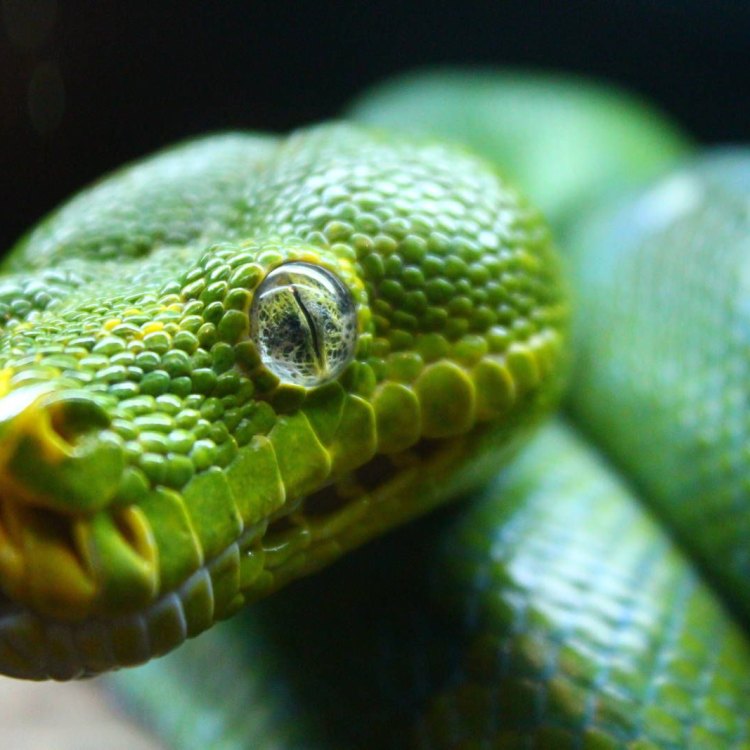
Green Tree Python
- Adult Size: 4-6 feet (1.2-1.8 meters)
- Average Lifespan: Up to 20 years in captivity
- Reproduction: Sexual
- Reproductive Behavior: Females lay eggs
- Sound or Call: Soft hissing or grunting sounds
- Migration Pattern: Non-migratory
- Social Groups: Solitary
- Behavior: Nocturnal and arboreal
- Threats: Habitat loss and illegal pet trade
- Conservation Status: Least Concern
- Impact on Ecosystem: Helps regulate populations of small mammals and birds
- Human Use: Captivity and pet trade
- Distinctive Features: Vibrant green color and patterned scales
- Interesting Facts: They have a prehensile tail that helps them grip onto branches
- Predator: No natural predators
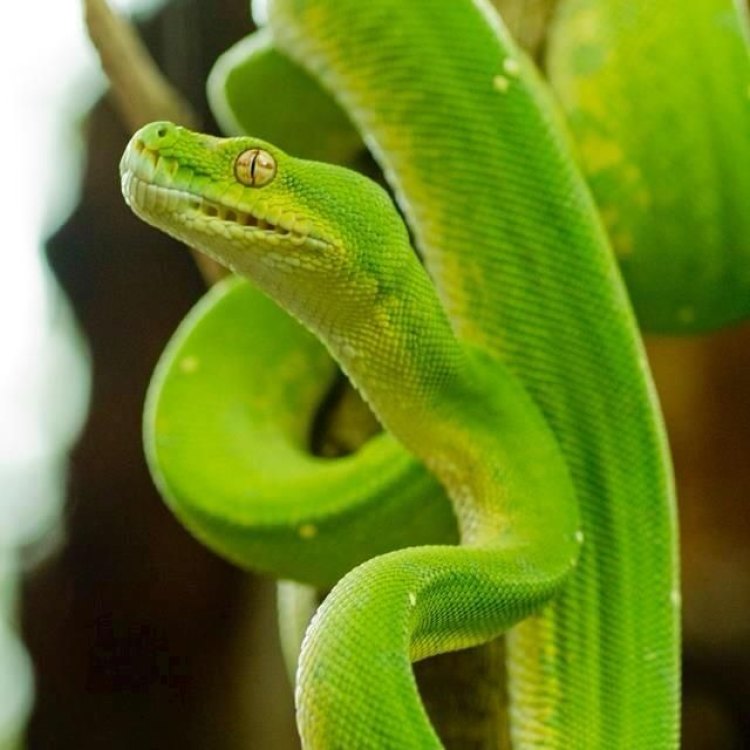
Morelia viridis
The Fascinating World of the Green Tree Python
The rainforests are known to harbor a diverse range of species, but one that stands out with its mesmerizing colors and unique features is the Green Tree Python. This arboreal snake has captured the hearts of snake enthusiasts, and even those who are not fans of these reptiles cannot help but be entranced by its beauty.In this article, we will dive into the fascinating world of the Green Tree Python, exploring its physical characteristics, behavior, threats, conservation status, and impact on the ecosystem. So, sit back, relax, and let us take a journey into the enchanting world of this stunning python PeaceOfAnimals.Com.
A Unique and Vibrant Appearance
The Green Tree Python, also known as Morelia viridis, is a non-venomous snake species belonging to the family Pythonidae. It is endemic to the tropical rainforests of New Guinea and Australia, with some populations also found in Indonesia and the surrounding islands.One of the key features that make the Green Tree Python stand out is its vibrant green color. This striking coloration is believed to serve as camouflage, helping the snake blend in with its surroundings and hunt its prey more effectively. But what is interesting is that this lizard-like coloring is not present at birth. Baby Green Tree Pythons have a bright yellow or red color, which gradually changes to green as they mature.
In addition to their color, another unique feature of the Green Tree Python is its patterned scales. These snakes have a pattern of lighter green scales outlined with a darker shade, giving them a marbled or reticulated appearance. This distinctive pattern is different for every individual, making it easier to identify them Greenland Dog.
Apart from its striking appearance, the Green Tree Python has a long and slender body, reaching an adult size of 4-6 feet (1.2-1.8 meters). They have large eyes, which are yellow in color, and a large head with heat-sensing pits that help them detect prey.
Reproduction and Behavior
The Green Tree Python is a sexually reproductive species with a typical mating season in the wet season, from November to December. During this time, the male snakes will actively search for females and compete for their attention.Once the courtship is successful, the female will lay a clutch of 5-25 eggs, with an average of 8-14 eggs. These eggs are then incubated for around 2-3 months, after which the baby snakes hatch. Green Tree Pythons are known to be excellent parents, with the females guarding and regulating the temperature of the eggs to ensure their survival.
In terms of behavior, Green Tree Pythons are primarily nocturnal and arboreal, meaning they are active at night and spend most of their time in trees. They are solitary creatures, only coming together during the breeding season. These snakes are also known for their slow and deliberate movements, making them seem lethargic and calm. However, they can strike with great speed and accuracy when hunting prey.
If you ever come across a Green Tree Python in the wild, you may hear soft hissing or grunting sounds. These are the only vocalizations these snakes make, using them to communicate with other individuals or as a warning.
Threats and Conservation Status
Despite their beautiful appearance and unique traits, the Green Tree Python faces many threats in its natural habitat. One of the most significant threats is habitat loss due to deforestation, mainly for agriculture and logging purposes. This has greatly reduced the available habitat for these snakes, making it difficult for them to find food and shelter.Another significant threat to the Green Tree Python is the illegal pet trade. Being prized for their vibrant colors and exotic appearance, these snakes are often captured and sold in the black market for high prices. This not only affects their population in the wild, but it also puts them at risk of being mistreated and neglected by inexperienced owners.
According to the International Union for Conservation of Nature (IUCN), the Green Tree Python is currently listed as least concern on the Red List of Threatened Species. While it is reassuring that their population is stable for now, continuous monitoring and conservation efforts are needed to ensure their survival in the future.
The Green Tree Python's Impact on the Ecosystem
Despite their fearsome appearance, the Green Tree Python plays a vital role in maintaining the balance of their rainforest ecosystem. As predators, they help to regulate the populations of small mammals and birds, preventing them from becoming too abundant and damaging the delicate ecosystem.Furthermore, Green Tree Pythons also play a key part in seed dispersal. As they move through the trees, they may accidentally ingest fruits or seeds, which are then dispersed through their waste. This helps with the distribution and germination of plants in their habitat, supporting the growth of new trees and vegetation.
Human Use and Pet Trade
Aside from being part of the illegal pet trade, Green Tree Pythons are also kept in captivity by breeders and pet owners. These snakes require specialized care, including proper temperature and humidity levels, and a spacious enclosure to climb and explore. As a result, they are not recommended for beginner snake owners.However, for experienced reptile enthusiasts, owning a Green Tree Python can be a rewarding and fulfilling experience. These snakes are known to have calm and docile personalities, and with proper care, can live up to 20 years in captivity. Despite being solitary in the wild, captive Green Tree Pythons can thrive in pairs or small groups, allowing for more social interaction and enrichment.
Interesting Facts about the Green Tree Python
While we have covered many interesting features and traits of the Green Tree Python, here are a few more fascinating facts about this species:- Green Tree Pythons have a prehensile tail, which means they can grip and hold onto branches with it. This unique adaptation helps them move around in the trees with ease and capture prey.
- Unlike other python species, Green Tree Pythons do not have spurs on their cloaca, a small bump that serves as a vestigial leg. This is because they are primarily arboreal and do not need these vestigial structures for mating or defense.
- These snakes have no natural predators in their habitat. With their excellent camouflage, powerful constriction, and sharp teeth, they are able to defend themselves against most threats.
In Conclusion
The Green Tree Python is truly a remarkable and unique species, with its vibrant colors, patterned scales, and distinctive features. Unfortunately, their populations in the wild are facing significant threats, making it essential for us to work towards their conservation and protection.But for those who have the opportunity to see these stunning snakes in the rainforest or own them in captivity, they are a reminder of the beauty and diversity of our natural world. So let us appreciate and respect the Green Tree Python and work towards ensuring their place in our ecosystem for generations to come.
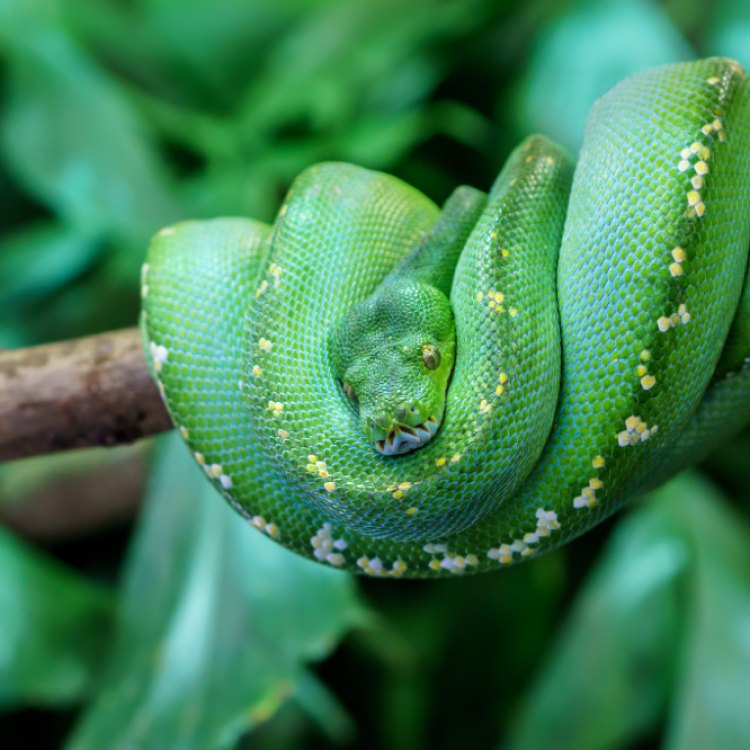
Incredible Green Tree Python: The Mystical Creature of the Rainforests
Disclaimer: The content provided is for informational purposes only. We cannot guarantee the accuracy of the information on this page 100%. All information provided here may change without prior notice.



